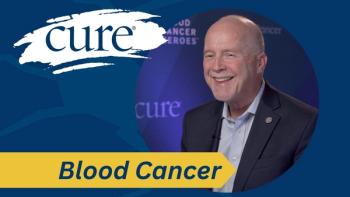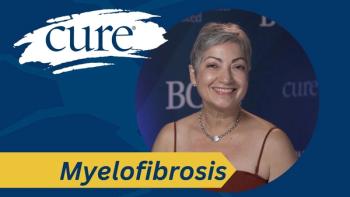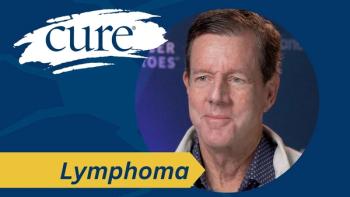
Under the Microscope: Cancer Biomarkers
When deciding on a cancer treatment—and determining its effectiveness—look for a biomarker.
Mark Roll’s pulmonary doctor was so astonished to learn that his stubborn cough was due to lung cancer that he tracked Roll down on a warm June evening in 2012 to tell him right away. The call came on Roll’s mobile phone as he napped in the car, awaiting his wife and daughter, who were shopping. Roll had never smoked, and the doctor suspected his cough might have come from exposure to a fungus on a trip from the previous year. Roll wondered about that trip, as well: How could he have hiked 63 miles over 12 days in Cimarron, N.M., at an elevation of 12,000 feet with 50 pounds of gear and supplies in his backpack, yet apparently be so sick now.
Not only did the diagnosis confirm Roll had lung cancer but scans found tumors in both of his lungs, his bones and in his brain. A special test of the tumor revealed something else: it contained a mutation in the EGFR gene, which happens more often than not in nonsmokers who develop lung cancer. Often, the results of these special tests can help in all stages of cancer treatment. In Roll’s case, his tumor’s EGFR mutation was a perfect target for Tarceva (erlotinib).
Roll started on Tarceva as soon as his mutation was identified, and the treatment allowed him to put cancer in the rearview mirror for the time being. His brain tumors are dwindling, his right lung is clear, and the tumors in his left lung are stable. His stamina returning, the 53-year-old was able to dance for hours at his oldest daughter’s wedding. “Until that day they put me on oxygen I’m not going to worry about it,” Roll says.
Biomarkers are changing the way doctors diagnose, treat and monitor cancer. Tests for biomarkers can find misbehaving genes or other telltale signs that can help with treatment decisions. These tests might be as simple as using a chemical detection method that stains certain proteins in cancer cells or as elaborate as genetic sequencing to determine a specific mutation unique to cancer cells but not found in healthy cells.
Traditional chemotherapy has been more of a one-size-fits-all approach, with some patients responsive and others not. Now, instead of giving people a simple diagnosis of lung cancer or breast cancer, doctors often are able to provide much more detailed information. “Diagnosing and treating cancer this way is a whole new ballgame, and that’s the beauty of it,” says Mark Kris, chief of thoracic oncology at Memorial Sloan-Kettering Cancer Center in New York.
In some types of cancer, treatments have been developed to target a mutation. For example, in non-small cell lung cancer, a mutation in the ALK gene makes an abnormal protein, which fuels the cancer. The drug Xalkori (crizotinib) is designed to block that protein. But if the cancer carries a mutation that is different from the drug’s intended target, there’s no reason to treat the patient with at drug that won’t work. In some cases, the presence of a mutation in a tumor may mean there are no effective targeted treatment options.
Rick Ramos, 57, had already begun treatment for late-stage colon cancer in July 2012 when he learned that his tumor had a mutation in the KRAS (Kirsten rat sarcoma) gene. (The gene is named after Werner Kirsten, who discovered it in a cancer-causing virus in rats.) Ramos’ oncologist told him that having the mutation meant using two agents designed to target the epidermal growth factor receptor (EGFR), which makes a protein that’s essential to cell division, would be ineffective. Currently, there are no drugs to target KRAS mutations (although there is intensive research in that direction). At present, studies suggest that mutations in KRAS work together with other genes as part of cell networks, and that some of these other genes can be targeted by drugs.
“Should these approaches be borne out in the clinic, there is hope that tumors with KRAS mutations may one day also be treated with targeted therapies,” says Daniel Haber, director of the Massachusetts General Hospital Cancer Center in Boston. “Even when a tumor responds dramatically to a targeted therapy, however, it can develop resistance to the treatment within a year.
“Tumors adapt,” Haber explains. “And even the most effective therapies end up selecting for cancer cells that have developed mechanisms to overcome the drug. There are very specific ways in which cancer cells become resistant, often with additional mutations in the genes that were targeted in the first place and that prevent the drug from binding. As we begin to understand these, we can monitor for them and develop drugs that work against the resistant cancer cells.” Essentially, it becomes a race between the cancer’s ability to mutate and become resistant to treatment and the scientists’ ability to develop new drugs against the mutated genes.
Ramos is taking a new regimen of Xeloda (capecitabine) and Avastin (bevacizumab) that, so far, is working. Xeloda is a chemotherapy that acts against fast-growing cells, and Avastin works against the signaling protein VEGF (vascular endothelial growth factor), which spurs blood vessel growth to the tumor.
Biomarkers have not only changed the way cancer is diagnosed and treated but also the way doctors monitor a patient’s progress. During treatment, doctors can use biomarkers to learn if the cancer has developed drug resistance or if harmful side effects crop up. These telltale signs can show up as a protein in a blood test or a chemical reaction to chemotherapy.
Kris says the best example of using biomarkers to choose and monitor treatment is chronic myeloid leukemia (CML). The drug Gleevec (imatinib) targets the weak spot in CML—the BCR-ABL fusion gene, which is the sole driver of the disease when it is in the “chronic” phase. As sometimes happens with cancer, the malignant cells develop drug resistance. With CML, researchers went back to the laboratory, Kris says, found the mutations that signaled resistance to treatment and developed new treatments. “We now have four or five drugs approved that can target those mutations,” he adds.
While some biomarkers can point doctors to a definitive course of action, some are less definitive and can leave treatment decisions in a gray zone. For instance, breast cancer cells with extra copies of the HER2 gene make too much of the HER2 protein, a growth factor receptor that keeps cancer cells growing. However, additional factors to determine the impact of cancer response to HER2-targeted therapy are needed.
In a study presented at last year’s annual meeting of the American Society of Clinical Oncology (ASCO), researchers found that a tumor’s response to HER2-targeted therapy Perjeta (pertuzumab) was linked to the actual amount of HER2 protein the cancer cells produced. A study by different researchers presented last year at the American Association for Cancer Research found that women with HER2-positive breast cancer, who also had a mutation in the PIK3CA gene did not respond as well to Perjeta, perhaps because the mutation overrides the HER2 overexpression. More validation is needed before these markers can be used to make risk/benefit decisions about the use of HER2-targeting therapies. Recently, mutations in the HER2 gene have been discovered in a variety of cancers, seen mostly in cases that do not overexpress HER2 and therefore test “negative” for HER2 and require gene sequencing to detect. In the laboratory, HER2 kinase inhibitors, such as neratinib, can block HER2 mutation-bearing cells, and clinical trials are now testing neratinib for several cancer types harboring this mutation. Phase I clinical trials (a test to determine dosing and safety) tested neratinib and another drug called temsirolimus and showed that diarrhea was the most common complaint.
Even though advanced cancers eventually find their way around treatments aimed right at a tumor’s most vulnerable spot, there may or may not be effective alternative therapies once that happens. “I have known so many people who have survived their cancer because of advances in knowledge, advances in therapy, and in diagnostic tools,” Korc says. “People forget what happened in the 1970s, where no matter what we did for all kinds of cancers, some patients would be dead in a few months. Today many categories of cancer get diagnosed and treated successfully.”




